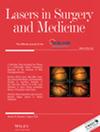In Vivo Time-Resolved Fluorescence Detection of Liver Cancer Supported by Machine Learning
Abstract
Objectives
One of the widely used optical biopsy methods for monitoring cellular and tissue metabolism is time-resolved fluorescence. The use of this method in optical liver biopsy has a high potential for studying the shift in energy-type production from oxidative phosphorylation to glycolysis and changes in the antioxidant defense of malignant cells. On the other hand, machine learning methods have proven to be an excellent solution to classification problems in medical practice, including biomedical optics. We aim to combine time-resolved fluorescence measurements and machine learning to automate the division of liver parenchyma and tumors (primary malignant, metastases and benign tumors) into classes.
Materials and Methods
An optical biopsy was performed using a developed setup with a fine-needle optical probe in clinical conditions under ultrasound control. Fluorescence decays were recorded in a conditionally healthy liver and lesions during percutaneous needle biopsy. The labeled data set was created on the basis of the recorded fluorescence results and the histopathological classification of the biopsies obtained. Several machine learning methods were trained using different separation strategies of the training test set, and their respective accuracy was compared.
Results
Our results show that each of the tumor types had its own characteristic metabolic shifts recorded by the time-resolved fluorescence spectroscopy. The application of machine learning demonstrates a reliable separation of the liver and all tumor types into cancer and noncancer classes with sensitivity, specificity and corresponding accuracy greater than 0.91, 0.79 and 0.90, using the random forest method. We also show that our method is capable of giving a preliminary diagnosis of the type of liver tumor (primary malignant, metastases and benign tumors) with a sensitivity, specificity and accuracy of at least 0.80, 0.95 and 0.90.
Conclusions
These promising results highlight its potential as a key tool in the future development of diagnostic and therapeutic strategies for liver cancers. Lasers Surg. Med. 00:00–00, 2024. 2024 Wiley Periodicals LLC.


 求助内容:
求助内容: 应助结果提醒方式:
应助结果提醒方式:


